When it comes to the compact SUV market, few vehicles generate as much buzz as the Renault Symbioz and the Toyota C-HR. Both models blend stylish design with innovative technology, but they also cater to different driver preferences and needs. In this article, we will delve into the technical aspects and innovations of each model, providing a comprehensive comparison to help potential buyers make an informed decision.
Renault Symbioz vs Toyota C-HR – Which car suits you better?
Both models have their strengths – but which one suits you more?
Compare performance, efficiency, price and space directly: Renault Symbioz or Toyota C-HR?
Design and Dimensions
The Renault Symbioz boasts a contemporary SUV design characterized by smooth curves and a robust stance. With a length of 4413 mm, a width of 1797 mm, and a height of 1575 mm, it presents a substantial road presence without feeling overly bulky. The car’s five-door configuration and spacious trunk capacity of 492 liters underscore its suitability for families.
On the other hand, the Toyota C-HR is slightly smaller, measuring 4362 mm in length and 1832 mm in width, with a height varying from 1558 to 1564 mm depending on the variant. Its unique design features above-average ground clearance and striking styling that make it instantly recognizable. Despite its less cavernous trunk capacity, which ranges from 350 to 447 liters based on the variant, it offers practical storage for daily use.
Powertrain and Performance
The Renault Symbioz is powered by a full hybrid 1.6-liter 3-cylinder engine, producing 143 hp (105 kW) and delivering a torque of 250 Nm. Its seamless automatic gearbox optimizes power delivery for swift accelerations, allowing it to reach 0-100 km/h in a respectable 10.6 seconds. On the efficiency front, the Symbioz excels with a fuel consumption of just 4.8 L/100 km and CO2 emissions rated at 109 g/km.
The Toyota C-HR, however, offers a wider array of powertrain options. The base full hybrid engine is a 1.8-liter 4-cylinder that outputs 140 hp (103 kW), while the more powerful 2.0-liter variant can achieve up to 197 hp (145 kW). The acceleration varies from 7.4 seconds for the performance-oriented versions to 9.9 seconds for the base model. Impressively, its fuel consumption starts at just 4.7 L/100 km, with CO2 emissions ranging from 105 to 108 g/km, while a plug-in hybrid variant reaches an exceptional electric range of 67 km.
Innovative Features and Technology
The Renault Symbioz integrates state-of-the-art technology, including advanced infotainment systems and driver assistance features. The model is designed with user-friendly interfaces, allowing seamless connectivity with smartphones and other devices. Furthermore, the car’s hybrid architecture promotes an eco-friendly driving experience, maximizing energy efficiency.
In comparison, the Toyota C-HR incorporates a wealth of technological innovations aimed at enhancing driver safety and comfort. Offering features such as adaptive cruise control, lane departure alert, and automatic emergency braking as standard in many of its trims, the C-HR is designed to prioritize safety without compromising on the driving experience. The infotainment system also stands out with its intuitive use and connectivity options, appealing to tech-savvy drivers.
Final Thoughts: Which One to Choose?
Choosing between the Renault Symbioz and the Toyota C-HR ultimately depends on individual needs and preferences. The Symbioz excels with its higher trunk capacity and powerful hybrid performance, making it a suitable choice for families seeking both efficiency and space. In contrast, the C-HR’s varied powertrain options and advanced safety technology make it an attractive option for those who prioritize driving dynamics and safety features.
Each model epitomizes innovation in the compact SUV segment. Whether you lean towards the reliability and variety of the Toyota C-HR or the spaciousness and efficiency of the Renault Symbioz, both vehicles stand as solid contenders in today’s automotive market.
Here’s where it gets real: The technical differences in detail
Costs and Efficiency:
Price and efficiency are key factors when choosing a car – and this is often where the real differences emerge.
Renault Symbioz has a to a small extent advantage in terms of price – it starts at 24400 £, while the Toyota C-HR costs 29100 £. That’s a price difference of around 4706 £.
Fuel consumption also shows a difference: Toyota C-HR manages with 0.80 L and is therefore decisively more efficient than the Renault Symbioz with 4.50 L. The difference is about 3.70 L per 100 km.
Engine and Performance:
Under the bonnet, it becomes clear which model is tuned for sportiness and which one takes the lead when you hit the accelerator.
When it comes to engine power, the Toyota C-HR has a distinct edge – offering 223 HP compared to 158 HP. That’s roughly 65 HP more horsepower.
In acceleration from 0 to 100 km/h, the Toyota C-HR is distinct quicker – completing the sprint in 7.40 s, while the Renault Symbioz takes 9.10 s. That’s about 1.70 s faster.
There’s no difference in top speed – both reach 180 km/h.
Space and Everyday Use:
Cabin size, boot volume and payload all play a role in everyday practicality. Here, comfort and flexibility make the difference.
Both vehicles offer seating for 5 people.
In curb weight, Renault Symbioz is somewhat lighter – 1359 kg compared to 1505 kg. The difference is around 146 kg.
In terms of boot space, the Renault Symbioz offers evident more room – 576 L compared to 447 L. That’s a difference of about 129 L.
In maximum load capacity, the Renault Symbioz performs evident better – up to 1682 L, which is about 527 L more than the Toyota C-HR.
When it comes to payload, Renault Symbioz barely noticeable takes the win – 459 kg compared to 425 kg. That’s a difference of about 34 kg.
Who comes out on top?
Overall, the Toyota C-HR shows itself to be outperforms in nearly all aspects and secures the title of DriveDuel Champion.
It convinces with the more balanced overall package and proves to be the more versatile choice for everyday use.
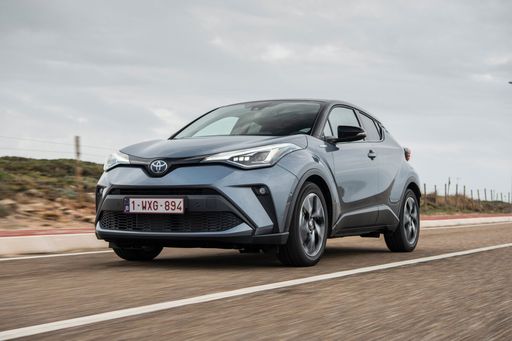 @ Toyota Motor Corporation
@ Toyota Motor Corporation
Toyota C-HR
Renault Symbioz
The Renault Symbioz feels less like a traditional car and more like a rolling living room that's been told it's allowed to drive — its flowing lines and minimalist cabin are pure concept-car theatre that teases the future of everyday transport. For buyers with an eye for design and a taste for tech-forward ideas, the Symbioz is an alluring vision of what Renault could offer tomorrow, even if it's not yet a model you can park in your driveway.
details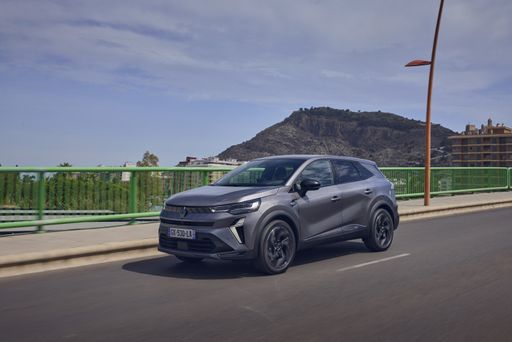 @ Renault Group Media
@ Renault Group Media
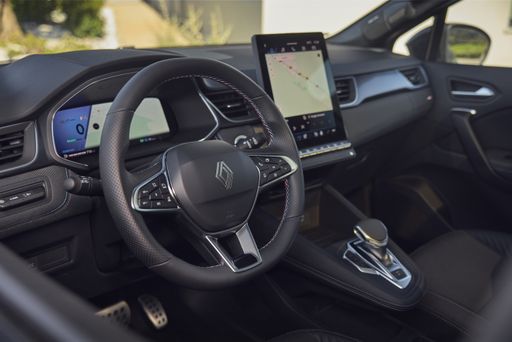 @ Renault Group Media
@ Renault Group Media
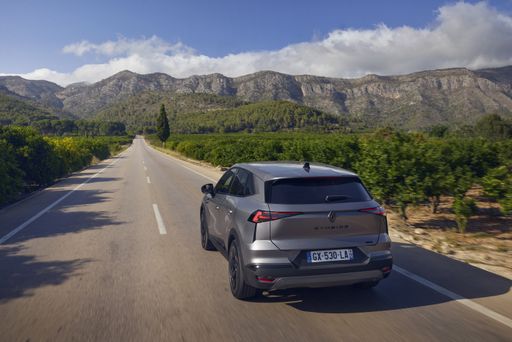 @ Renault Group Media
@ Renault Group Media
Toyota C-HR
The Toyota C-HR cuts a striking figure with its angular styling and coupe-like profile, so you’ll never go unnoticed in the supermarket car park. It balances everyday practicality with a nimble, city-friendly personality, making routine commutes feel a touch more fun without asking for forgiveness.
details @ Toyota Motor Corporation
@ Toyota Motor Corporation
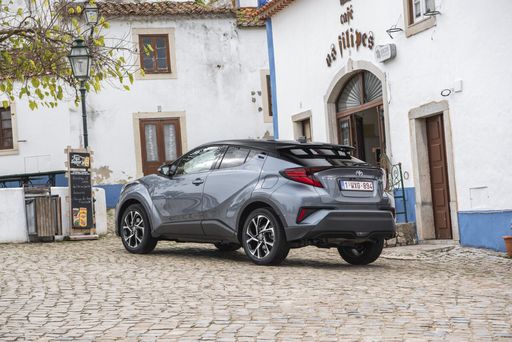 @ Toyota Motor Corporation
@ Toyota Motor Corporation
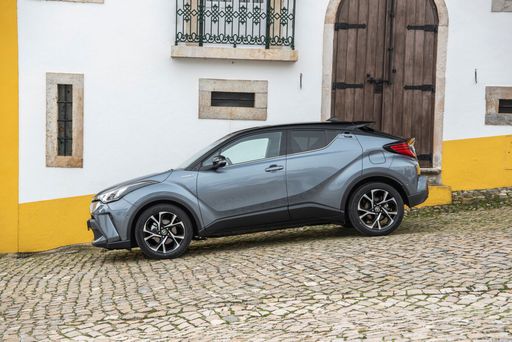 @ Toyota Motor Corporation
@ Toyota Motor Corporation
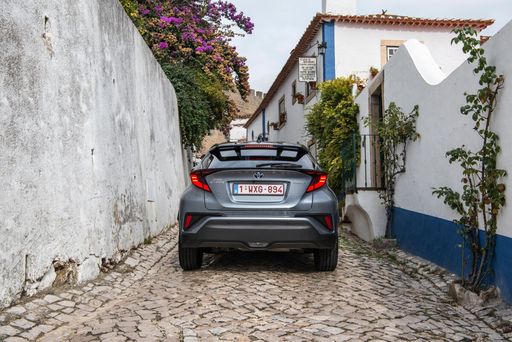 @ Toyota Motor Corporation
@ Toyota Motor Corporation
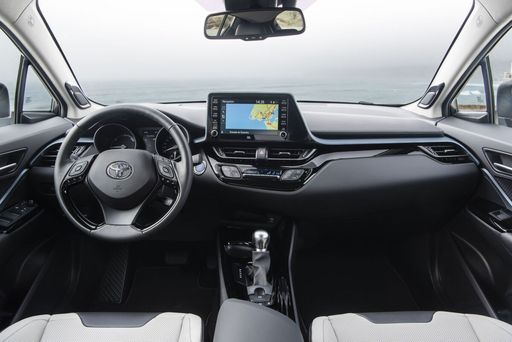 @ Toyota Motor Corporation
@ Toyota Motor Corporation
 @ Renault Group Media
@ Renault Group Media
|
 @ Toyota Motor Corporation
@ Toyota Motor Corporation
|
|
|
|
Costs and Consumption |
|
|---|---|
|
Price
24400 - 30700 £
|
Price
29100 - 42800 £
|
|
Consumption L/100km
4.5 - 6 L
|
Consumption L/100km
0.8 - 5.1 L
|
|
Consumption kWh/100km
-
|
Consumption kWh/100km
-
|
|
Electric Range
-
|
Electric Range
68 km
|
|
Battery Capacity
-
|
Battery Capacity
-
|
|
co2
102 - 136 g/km
|
co2
17 - 115 g/km
|
|
Fuel tank capacity
48 L
|
Fuel tank capacity
43 L
|
Dimensions and Body |
|
|---|---|
|
Body Type
SUV
|
Body Type
SUV
|
|
Seats
5
|
Seats
5
|
|
Doors
5
|
Doors
5
|
|
Curb weight
1359 - 1544 kg
|
Curb weight
1505 - 1755 kg
|
|
Trunk capacity
492 - 576 L
|
Trunk capacity
350 - 447 L
|
|
Length
4413 mm
|
Length
4362 mm
|
|
Width
1797 mm
|
Width
1832 mm
|
|
Height
1575 mm
|
Height
1558 - 1564 mm
|
|
Max trunk capacity
1582 - 1682 L
|
Max trunk capacity
1076 - 1155 L
|
|
Payload
376 - 459 kg
|
Payload
375 - 425 kg
|
Engine and Performance |
|
|---|---|
|
Engine Type
Full Hybrid, Petrol MHEV
|
Engine Type
Full Hybrid, Plugin Hybrid
|
|
Transmission
Automatic, Manuel
|
Transmission
Automatic
|
|
Transmission Detail
Automatic Gearbox, Manual Gearbox, Dual-Clutch Automatic
|
Transmission Detail
CVT
|
|
Drive Type
Front-Wheel Drive
|
Drive Type
Front-Wheel Drive, All-Wheel Drive
|
|
Power HP
140 - 158 HP
|
Power HP
140 - 223 HP
|
|
Acceleration 0-100km/h
9.1 - 11 s
|
Acceleration 0-100km/h
7.4 - 9.9 s
|
|
Max Speed
180 km/h
|
Max Speed
175 - 180 km/h
|
|
Torque
250 - 265 Nm
|
Torque
-
|
|
Number of Cylinders
4
|
Number of Cylinders
4
|
|
Power kW
103 - 116 kW
|
Power kW
103 - 164 kW
|
|
Engine capacity
1332 - 1789 cm3
|
Engine capacity
1798 - 1987 cm3
|
General |
|
|---|---|
|
Model Year
2025
|
Model Year
2024 - 2025
|
|
CO2 Efficiency Class
C, D, E
|
CO2 Efficiency Class
C, B
|
|
Brand
Renault
|
Brand
Toyota
|
What drive types are available for the Renault Symbioz?
The Renault Symbioz is offered with Front-Wheel Drive.
The prices and data displayed are estimates based on German list prices and may vary by country. This information is not legally binding.
